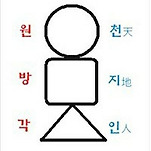<p>Some&#160;Like&#160;It&#160;Hot <br><br>By&#160;Howard&#160;Suber <br><br>DEC&#160;18,&#160;1989 <br><br>Billy&#160;Wilder&#160;is&#160;to&#160;the&#160;sound&#160;era&#160;what&#160;Chaplin,&#160;Keaton&#160;and&#160;Lloyd&#160;were&#160;to&#160;the&#160;silent:&#160;one&#160;of&#160;the&#160;foremost&#160;masters&#160;of&#160;the&#160;medium’s&#160;comic&#160;forms.&#160;Like&#160;them,&#160;his&#160;comedies&#160;were&#160;not&#160;only&#160;considered&#160;the&#160;best&#160;in&#160;their&#160;time,&#160;they&#160;have&#160;continued&#160;to&#160;be&#160;the&#160;best&#160;over&#160;time. <br><br>Some&#160;Like&#160;It&#160;Hot&#160;demonstrates&#160;Wilder&#160;at&#160;the&#160;peak&#160;of&#160;his&#160;form.&#160;Marilyn&#160;Monroe,&#160;who&#160;has&#160;remained&#160;a&#160;universal&#160;icon&#160;among&#160;movie&#160;stars&#160;longer&#160;perhaps&#160;than&#160;any&#160;other&#160;female&#160;star,&#160;is&#160;also&#160;at&#160;her&#160;peak&#160;in&#160;this&#160;film.&#160;Marilyn&#160;has&#160;never&#160;been&#160;funnier,&#160;more&#160;alluring,&#160;or&#160;more&#160;captivating,&#160;than&#160;she&#160;is&#160;in&#160;this&#160;film.&#160;Some&#160;Like&#160;It&#160;Hot&#160;also&#160;proved&#160;to&#160;be&#160;a&#160;milestone&#160;in&#160;the&#160;careers&#160;of&#160;Jack&#160;Lemmon&#160;and&#160;Tony&#160;Curtis,&#160;who&#160;spend&#160;more&#160;than&#160;three&#160;quarters&#160;of&#160;the&#160;film&#160;in&#160;drag.&#160;And&#160;let&#160;us&#160;not&#160;forget&#160;George&#160;Raft&#160;and&#160;Joe&#160;E.&#160;Brown,&#160;whose&#160;work&#160;in&#160;the&#160;early&#160;days&#160;of&#160;the&#160;sound&#160;era&#160;now&#160;is&#160;largely&#160;forgotten,&#160;but&#160;who&#160;in&#160;this&#160;film&#160;each&#160;give&#160;one&#160;of&#160;the&#160;memorable&#160;performances&#160;of&#160;their&#160;careers. <br><br>Even&#160;the&#160;most&#160;successful&#160;of&#160;sound&#160;comedies&#160;tends&#160;to&#160;date&#160;rather&#160;quickly,&#160;but&#160;Some&#160;Like&#160;It&#160;Hot&#160;has&#160;managed&#160;to&#160;remain&#160;today&#160;as&#160;fresh&#160;and&#160;lively&#160;as&#160;it&#160;was&#160;three&#160;decades&#160;ago.&#160;Billy&#160;Wilder&#160;and&#160;his&#160;writing&#160;partner,&#160;I.A.L.&#160;Diamond,&#160;turned&#160;to&#160;a&#160;German&#160;farce&#160;of&#160;the&#160;twenties&#160;for&#160;their&#160;original&#160;source&#160;material,&#160;but&#160;putting&#160;a&#160;couple&#160;of&#160;guys&#160;in&#160;drag&#160;has&#160;been&#160;a&#160;familiar&#160;comic&#160;shtick&#160;far&#160;longer&#160;than&#160;that.&#160;Greek&#160;and&#160;Roman&#160;audiences&#160;roared&#160;at&#160;the&#160;gag&#160;in&#160;the&#160;works&#160;of&#160;playwrights&#160;such&#160;as&#160;Plautus&#160;and&#160;Terrence.&#160;Elizabethan&#160;audiences&#160;did&#160;the&#160;same&#160;when&#160;Shakespeare&#160;continued&#160;the&#160;tradition,&#160;and&#160;music&#160;halls&#160;and&#160;variety&#160;shows&#160;in&#160;England,&#160;America,&#160;and&#160;Europe&#160;also&#160;used&#160;the&#160;gag&#160;as&#160;a&#160;sure-fire&#160;way&#160;to&#160;get&#160;a&#160;laugh. <br><br>What&#160;helps&#160;Some&#160;Like&#160;It&#160;Hot&#160;rise&#160;above&#160;its&#160;2600-year-history&#160;is&#160;the&#160;combination&#160;of&#160;Wilder&#160;and&#160;Diamond’s&#160;wise-cracking&#160;dialogue&#160;and&#160;Marilyn&#160;Monroe’s&#160;powerful&#160;performance&#160;as&#160;Sugar&#160;Kane&#160;(n&#233;e&#160;Kawalchick),&#160;a&#160;singer&#160;in&#160;the&#160;all-girl&#160;orchestra,&#160;“Sweet&#160;Sue&#160;and&#160;her&#160;Society&#160;Syncopators.” <br><br>What&#160;also&#160;helps&#160;are&#160;Lemmon&#160;and&#160;Curtis’&#160;finely-controlled&#160;performances&#160;as&#160;two&#160;musicians&#160;hiding&#160;in&#160;the&#160;band&#160;in&#160;order&#160;to&#160;escape&#160;from&#160;George&#160;Raft&#160;and&#160;his&#160;gang&#160;after&#160;they&#160;have&#160;witnessed&#160;a&#160;scene&#160;based&#160;on&#160;the&#160;infamous&#160;Valentine’s&#160;Day&#160;Massacre. <br><br>Jack&#160;Lemmon&#160;graciously&#160;consented&#160;to&#160;a&#160;lengthy&#160;interview&#160;for&#160;this&#160;videodisc.&#160;His&#160;comments&#160;on&#160;the&#160;making&#160;of&#160;the&#160;film,&#160;his&#160;theories&#160;about&#160;comic&#160;acting,&#160;and&#160;his&#160;analysis&#160;of&#160;Billy&#160;Wilder’s&#160;unique&#160;powers&#160;are&#160;incorporated&#160;into&#160;the&#160;analysis&#160;of&#160;the&#160;film&#160;that&#160;appears&#160;on&#160;Analog&#160;Track&#160;Two.&#160;This&#160;analysis&#160;focuses&#160;on&#160;the&#160;structure&#160;and&#160;technique&#160;of&#160;Some&#160;Like&#160;It&#160;Hot,&#160;provides&#160;background&#160;on&#160;the&#160;film’s&#160;making,&#160;and&#160;demonstrates&#160;how&#160;the&#160;film&#160;follows&#160;classic&#160;principles&#160;of&#160;comedic&#160;construction. <br><br>There&#160;are&#160;two&#160;ingredients&#160;that&#160;are&#160;necessary&#160;for&#160;any&#160;comedy&#160;that&#160;tells&#160;a&#160;story:&#160;(1)&#160;an&#160;underlying&#160;pain&#160;and&#160;(2)&#160;a&#160;three-step&#160;structure&#160;of&#160;desire,&#160;deception,&#160;and&#160;discovery.&#160;The&#160;analysis&#160;on&#160;Audio&#160;Track&#160;Two&#160;explains&#160;why&#160;it&#160;is&#160;that&#160;comedy&#160;requires&#160;deception,&#160;and&#160;demonstrates&#160;how&#160;this&#160;principle&#160;works&#160;in&#160;this&#160;film. <br><br>There&#160;is&#160;another&#160;kind&#160;of&#160;pain&#160;and&#160;deception&#160;that&#160;underlies&#160;Some&#160;Like&#160;It&#160;Hot:&#160;the&#160;notion&#160;that&#160;Marilyn&#160;Monroe&#160;was&#160;nothing&#160;more&#160;than&#160;an&#160;early&#160;“T&#160;and&#160;A”&#160;girl&#160;who&#160;could&#160;drive&#160;men&#160;mad&#160;but&#160;couldn’t&#160;act.&#160;The&#160;sources&#160;of&#160;Marilyn’s&#160;personal&#160;pain,&#160;both&#160;in&#160;her&#160;personal&#160;life&#160;and&#160;during&#160;the&#160;making&#160;of&#160;the&#160;film,&#160;could&#160;explain&#160;why&#160;she&#160;appealed&#160;to&#160;women&#160;as&#160;well&#160;as&#160;men.&#160;Although&#160;Marilyn&#160;never&#160;received&#160;the&#160;recognition&#160;for&#160;her&#160;acting&#160;ability&#160;that&#160;she&#160;so&#160;desperately&#160;desired&#160;during&#160;her&#160;lifetime,&#160;she&#160;was,&#160;in&#160;fact,&#160;one&#160;of&#160;the&#160;most&#160;effective&#160;comedians&#160;in&#160;film&#160;history. <br><br>Above&#160;all,&#160;it&#160;is&#160;Billy&#160;Wilder’s&#160;comedic&#160;genius&#160;that&#160;makes&#160;this&#160;film&#160;the&#160;classic&#160;that&#160;it&#160;is&#160;today.&#160;The&#160;acerbic&#160;one-liners,&#160;the&#160;careful&#160;construction&#160;of&#160;character&#160;and&#160;situation,&#160;the&#160;simultaneous&#160;sentimental/cynical&#160;use&#160;of&#160;music&#160;and&#160;love&#160;scenes,&#160;the&#160;running&#160;lines&#160;and&#160;gags,&#160;and&#160;above&#160;all&#160;the&#160;absolute&#160;economy&#160;that&#160;makes&#160;everything&#160;contribute&#160;to&#160;the&#160;forward&#160;frenetic&#160;motion&#160;of&#160;the&#160;film&#160;are&#160;elements&#160;that&#160;make&#160;Billy&#160;Wilder&#160;one&#160;of&#160;America’s&#160;model&#160;writer/directors&#160;of&#160;comedy.</p>
<!-- -->
카페 게시글
영화
Some Like It Hot 몇몇은 그게 뜨거운 걸 좋아해
석수
추천 0
조회 4
23.11.17 08:12
댓글 0
다음검색



